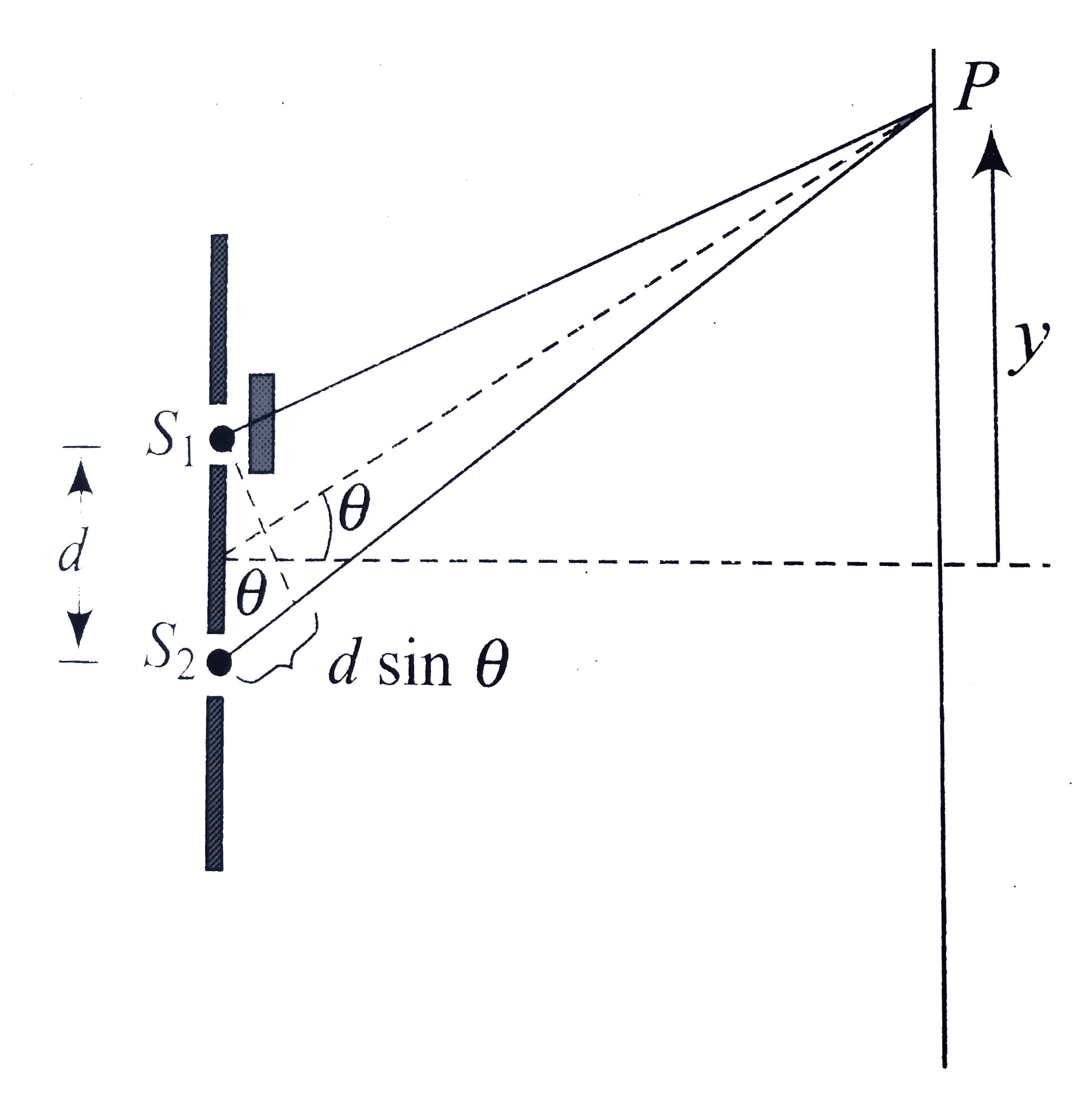A monochromatic light of λ=5000Å is inciden on two slits seperated by a distance of 5×10−4m. if a thin glass of thickness 1.5×10−6 m and refractive index 1.5 placed between one of the slits and screen. The pahses difference introduced at the position of central maxima is
3π
2π
2π/3
π/3
The correct Answer is:A
Path difference (μ−1)t=(1.5−1)1.5×10−6
Phase difference =2πλ×(μ−1)t
=2π×0.5×1.5×10−65x10
=3π
Topper's Solved these Questions
Similar Questions
Monochromatic light of lamba=5000Å is incident on two slits separately by a distance of 5×10−4m. The interference patteren is seen on a screen placed at a distance of 1m form the slits. A thing glass plate of thicknes 1.5×10−6m and refractive index μ=1.5 is placed between one of the slits and the screen. Find the intensity at the centre of the screen if the density there is I0 in the absence of the plate. Also find the lateral shift of the central maximum. '
View SolutionA monochromatic light of λ=500Å is incident on two identical slits separated by a distance of 5×10−4 m. The interference pattern is seen on a screen placed at a distance of 1 m from the plane of slits. A thin glass plate of thickness 1.5×10−6 m and refractive index μ=1.5 is placed between one of the slits and the screen . Find the intensity at the center of the screen.
View Solution
Knowledge Check
In YDSE, light of wavelength λ=5000Å is used, which emerges in phase from two slits distance d=3×10−7m apart. A transparent sheet of thickness t=1.5×10−7m, refractive index n=1.17, is placed over one of the slits. Where does the central maxima of the interference now appear from the center of the screen? (Find the value of y?)
 A4.9∘and D(μ−1)t2dB4.9∘and D(μ−1)tdC3.9∘and D(μ+1)tdD2.9∘and 2D(μ+1)td
A4.9∘and D(μ−1)t2dB4.9∘and D(μ−1)tdC3.9∘and D(μ+1)tdD2.9∘and 2D(μ+1)tdA thin mica sheet of thickness 2×10−6m and refractive index (μ=1.5) is introduced in the path of the first wave. The wavelength of the wave used is 5000Å. The central bright maximum will shift
A2 fringes upwardB2 fringes downwardC10 fringes upwardDNone of theseA thin mica sheet of thickness 4×10−6 m and refractive index (μ=1.5) is introduced in the path of the light from upper slit. The wavelength of the wave used is 5000Å The central bright maximum will shift
A4 fringes upwardB2 fringes downwardC10 fringes upwardDNone of these
A monochromatic light of λ=500nm is incident on two identical slits separated by a distance of 5×10−4m. The interference pattern is seen on a screen placed at a distance of 1m from the plane of slits. A thin glass plate of thickness 1.5×10−6m and refractive index μ=1.5 is placed between one of the slits and the screen. Find the intensity at the centre of the screen if the intensity is I0 in the absence of the plate. Also find the lateral shift of the central maxima and number of fringes crossed through centre.
View SolutionA monochromatic light of wavelength 5000Å incident normally on slit plane of YDSE setup. If d=5×10−4m and D = 1 m and a thin film thickness 1.5×10−6m and μ=1.5 is place in front of one of the slits, find intensity of light at the centre of screen if each slit produces an intensity I0 on screen. [0]
View SolutionA monochromatic beam of bright of light of wavelength 5000Å is used in Young's double slit experiment. If one of the slits is covered by a transparent sheet of thikness 1.4×10−5m, having refractive index of its medium 1.25. Then the number of fringes shifted is
View SolutionIn YDSE, light of wavelength λ=5000Å is used, which emerges in phase from two a slits distance d=3×10−7m apart. A transparent sheet of thickness t=1.5×106(−7)m, refractive indes n=1.17, is placed over one of the slits. Where does the central maxima of the interference now appear from the center of the screen? (Find the value of y?)

View SolutionA light of wavelength 6000Å shines on two narrow slits separeted by a distance 1.0 mm and illuminates a screen at a distance 1.5 m away. When one slit is covered by a thin glass plate of refractive index 1.8 and other slit by a thin glass plate of refractive index μ, the central maxima shifts by 0.1 rad. Both plates have the same thickness of 0.5 mm. The value of refractive index μ of the glass is
View Solution
